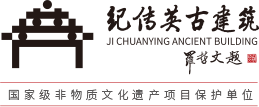Puning City God Temple is located on the northeast side of Hongyang Town, the old city of Puning, Guangdong Province, about 300 meters northeast of Jiuxian Ya, adjacent to Wenchang Pavilion. Puning City God Temple was built in the 42nd year of Jiajing in Ming Dynasty (1563). The city god is one of the important gods worshipped in the religious culture of the Han nationality. Most of them are played by famous officials and heroes who have contributed to the local people.
Three halls and two patios palace-style ancient buildings. It is 27 meters wide from east to west and 60 meters deep from north to south, with a total construction area of 1,620 square meters. The front hall is Sanshan Gate, the left and right of the gatehouse are dedicated to Ma Guan, and the left and right of the door are clairvoyance and Shunfeng ears. The central hall is offering work-for-work relief to Lord Bofu (commonly known as Duke Chenghuang). The back hall is divided into halls, which are dedicated to the Lady of the City God, the Eighteen Arhats and the Thousand-hand Guanyin. Between the main hall and the back hall is a release pond, where turtles and turtles are stocked, and water cotton trees (Metasequoia) are planted. There is an arch bridge in the middle of the pool, surrounded by white stone railings on both sides. In the layout of the temple, the garden buildings such as pools and arch bridges are boldly integrated into the layout of the temple. The architectural structure retains the style and local characteristics of the Ming Dynasty, and has high historical, artistic and architectural scientific research value. It is listed as a cultural relic protection unit in Puning City.



